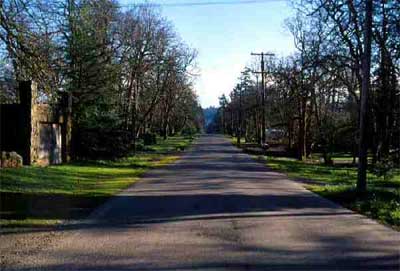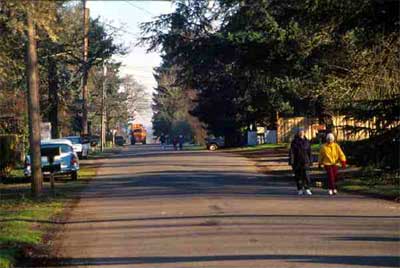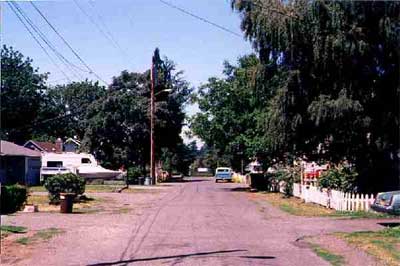Donald Appleyard is publishing a second edition of Livable Streets this year. This 6-minute video, based on his research, describes how heavy traffic on a street can reduce social interaction:
From the transcript:
Things such as a light traffic street helped knit a community together, and in contrast, a heavily traffic street would actually rip it apart and fewer social ties were able to be created…
This chart here shows the social interaction on these three different streets. So each line shows a connection between one person on the street and another. There are just a lot fewer lines on the heavily traffic street as opposed to the moderate or the light traffic street, which clearly has a lot more interconnection. So what these charts are showing is that people on the light traffic street know more people, have more friends than on the heavily traffic street. On the light traffic street people have on average three friends per person, and on the heavily traffic street 0.9 friends per person. The fact that the amount of traffic on the street on which you live can impact the number of friends you have in the world is of enormous significance.
See also:
The Age: “Transport study derails thinking on outer suburbs” (1/5/11)
In a paper for the journal Australian Planner, Dr John Stone, of the University of Melbourne, and Dr Paul Mees, of RMIT University, argue that many city dwellers have been presented with a false choice – live in apartments and enjoy good public transport or retain the house and land and rely on cars.
”Many planners, and other commentators on urban issues, appear to believe that getting significantly more people on public transport will not be possible until massive changes in suburban densities are achieved,” they write.
”The evidence challenges this view.”
“…we…argue that it is not necessary to intensify land-use across the whole city before significant improvement in both patronage and economic efficiency of public transport becomes possible.”
The keys to increasing public transport use in outer suburbs are more frequent buses, running at least every 10-15 minutes, and not just in peak hour; better co-ordination with rail services; more convenient transfers; and fares that allow free transfers between modes.
Portland Suburb Successfully Staves Off Densification

Oak Grove is a suburb of Portland that started more than a century ago, when the nation’s first interurban electric rail line connected Portland with Oregon City. People began building large homes on large lots along the rail line, and a community sprang up.
Over the years, many of the lots have been broken up, but in some areas, as here, they average more than a third of an acre in size and some are more than an acre. This means the area has very low densities and, in turn, not much automobile traffic.

Oak Grove remains unincorporated and thus under the jurisdiction of Clackamas County. In 1995, county planners came to the neighborhood and said they wanted to rezone the area to make it easier to walk around and ride bicycles. There are no sidewalks in the area, but because the area is so low in density, people do not hesitate to walk or ride bicycles.

This is a denser part of Oak Grove, where many of the houses are on 5,000-square-foot lots (about eight houses per acre). Even here, auto traffic is so low that there is little conflict between walking and driving.